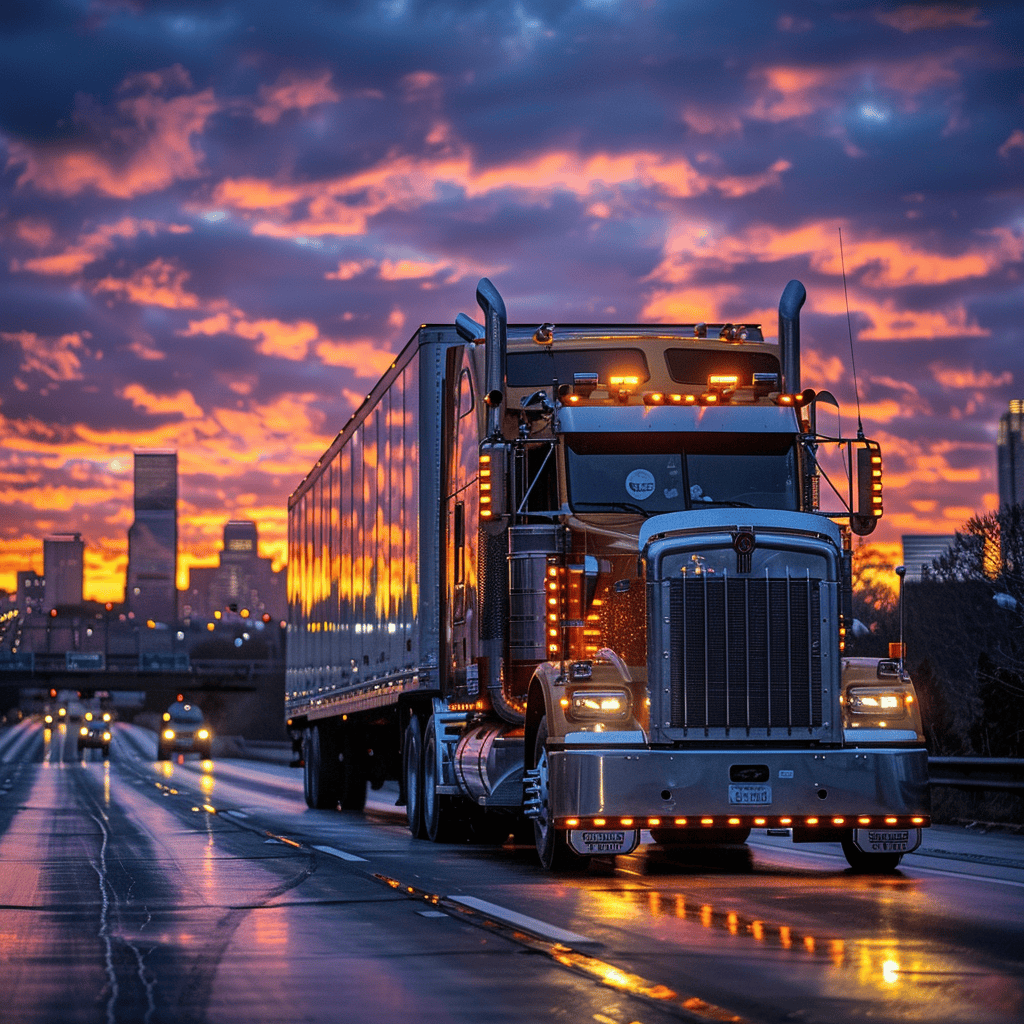Massachusetts Oversize Permits
Freedom Heavy Haul can offer expedited Pickup and Delivery for any size shipment anywhere in the USA. Contact us today for No Hassle, No Pressure Pricing.
In Massachusetts, the transportation of oversized loads is subject to strict regulations to ensure safety and infrastructure integrity. Oversize permits are required for vehicles and loads that exceed the legal dimensions and weight limits set by the state. These permits ensure that oversized loads can be transported safely and with minimal disruption to other road users. In this article, you will learn about Massachusetts Oversize Permits.
Legal Dimensions Without a Permit
Vehicles operating in Massachusetts without a permit must adhere to specific size and weight limitations.
Length
The maximum legal length for semi-trailers on Interstate highways in Massachusetts is 53 feet. This limit applies to most standard freight operations and ensures that vehicles can navigate the state’s roads and infrastructure without causing undue wear or safety hazards.

Width
The maximum legal width for vehicles without a permit is 8 feet 6 inches. This width is designed to allow safe passage through standard traffic lanes and to prevent vehicles from encroaching on adjacent lanes, which can cause accidents and traffic disruptions.
Height
The maximum legal height for vehicles is 13 feet 6 inches. This height limitation is crucial for ensuring that vehicles can safely pass under bridges, overpasses, and other structures without causing damage or posing a risk to other road users.
Weight
The maximum allowable gross weight for vehicles without a permit is 80,000 pounds. This limit is set to protect the structural integrity of roads and bridges, which can be compromised by excessively heavy loads.
Massachusetts Oversize Permits Limits
For vehicles that exceed the legal dimensions and weight limits, a routine permit is required. These permits allow for the transportation of larger loads under controlled conditions.
Maximum Length
With a routine permit, vehicles in Massachusetts can be up to 115 feet in length. This extended length accommodates the transportation of large or long items that cannot be divided into smaller shipments.
Maximum Width
The maximum width allowed with a routine permit is 14 feet 11 inches. This width limit ensures that oversized loads can be transported safely without obstructing multiple lanes of traffic.
Maximum Height
Vehicles with a routine permit can be up to 14 feet 11 inches in height. Loads exceeding 13 feet 8 inches in height may require a route survey to ensure that the vehicle can safely navigate under bridges and other structures.
Maximum Weight
The maximum gross weight permitted with a routine permit is 130,000 pounds. This increased weight limit allows for the transportation of heavy machinery, construction materials, and other substantial loads.
Permit Types and Costs
Massachusetts offers several types of oversize permits, each with specific costs and conditions.

Single Trip Permit
A single trip permit is valid for five consecutive days and costs approximately $40. This permit is suitable for one-time or infrequent shipments of oversized loads.
Annual Permit
An annual permit, typically costing $400, is available for construction vehicles and other heavy-duty equipment. This permit allows for multiple trips within a year, providing flexibility for frequent transport operations.
Superload Permit
For extremely large or heavy loads, a superload permit is required. Superloads, which exceed routine permit limits, may necessitate additional engineering surveys and fees. The cost for a superload permit can vary based on the specifics of the load and route.
Operating Times and Restrictions
To minimize the impact on traffic and ensure safety, Massachusetts imposes specific operating times and restrictions for oversize loads.
General Travel Times
Vehicles under 12 feet wide and under 14 feet high are allowed to travel from Monday 12:01 AM through Saturday noon. These hours are designed to avoid peak traffic periods and reduce the risk of accidents.
Rush Hour and Holiday Restrictions
Travel for vehicles between 12 and 14 feet wide, over 80 feet long (but not exceeding 115 feet), and over 13 feet 11 inches in height is restricted during rush hours, specifically from 7:00 AM to 9:00 AM and 3:30 PM to 7:00 PM, Monday through Friday. Additionally, no travel is permitted on major holidays and some holiday weekends to prevent congestion and ensure safety.
Superload Travel Restrictions
For superloads, travel is generally restricted to specific hours and days to ensure the load can be transported safely. For example, superloads over 14 feet wide or over 115 feet long may travel only between 9:30 AM and 3:30 PM on Tuesday, Wednesday, and Thursday.
Escort Vehicle Requirements
Escort vehicles are necessary for transporting oversized loads to enhance safety and manage traffic.
Width Escorts
Loads over 12 feet wide require one escort vehicle. If the width exceeds 13 feet 6 inches, two escort vehicles are needed. This ensures that other road users are aware of the oversized load and can navigate around it safely.

Length Escorts
For vehicles over 80 feet in length, one escort vehicle is required. If the length exceeds 95 feet, two escort vehicles are needed. Loads that are 115 feet or longer require two State Police escorts in addition to the regular escort vehicles.
Height Escorts
Loads over 13 feet 8 inches in height require a route survey and one front escort vehicle. For heights exceeding 13 feet 11 inches, two escort vehicles are needed. Loads over 14 feet 11 inches require two front escort vehicles and a State Police escort.
Signage and Safety Requirements
Proper signage and safety measures are crucial for transporting oversized loads.
Signs
Vehicles transporting oversized loads must display “Oversize Load” signs on the rear. These signs alert other drivers to the presence of a large vehicle, allowing them to take appropriate precautions.
Flags
Red flags must be placed on the extremities and corners of the vehicle. These flags enhance visibility, especially in low-light conditions, and help prevent accidents.
Lights
Flashing amber lights visible from the front and rear are required for travel during darkness. These lights ensure that the oversized vehicle can be seen by other drivers, reducing the risk of collisions.
Application Process
Obtaining an oversize permit in Massachusetts involves several steps and documentation.
Online Permitting System
Massachusetts uses an online system for permit applications. This system streamlines the process, allowing applicants to submit their information and receive permits electronically.
Required Documentation
Applicants must provide detailed information about their vehicle, including its dimensions, weight, and intended route. This information ensures that the permit is issued accurately and that the load can be transported safely.
Insurance Requirements
Applicants must have liability insurance and may need to provide proof of insurance when applying for a permit. This requirement protects against potential damages or accidents during transportation.
Special Regulations and Considerations
Certain areas and routes in Massachusetts have specific regulations for oversize loads.
Massachusetts Turnpike Regulations
On the Massachusetts Turnpike, vehicles and loads up to 10 feet wide, legal weight, and up to 80 feet long do not require a permit. For larger loads, a Turnpike permit is necessary, and special engineering approval may be required for extremely large loads.
City of Boston Specific Requirements
In Boston, oversize and overweight loads often require additional escorts, including city police escorts. This ensures that the load can navigate the city’s streets safely and without causing significant disruption.
Overhang Regulations
For loads with significant overhang, specific escort requirements are in place. Loads with an overhang in excess of 4 feet require one rear escort vehicle, while overhangs exceeding 10 feet require additional escorts.







